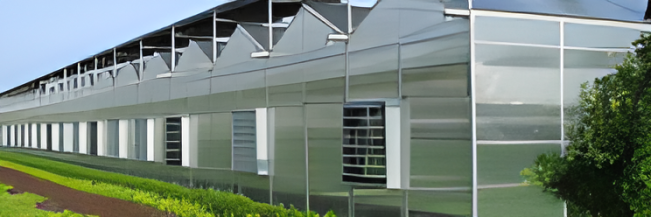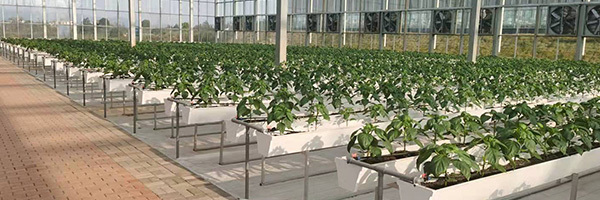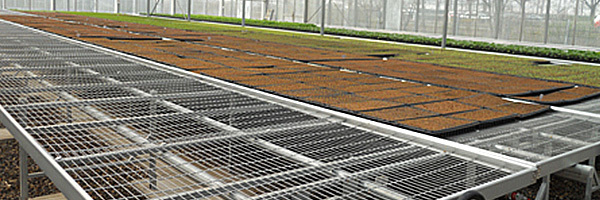-
-
Company Profile
-

Greenhouse Structures

-
Polycarbonate sheet greenhouse
-
Glass greenhouses
-
Multi-Span film greenhouse
-
Tunnel greenhouse
-
Sightseeing greenhouse
-
Double-film frame solar greenhouses
-
Glass and polycarbonate sheet greenhouses
-
Glass greenhouses structures suitable for planting
-
Glass Greenhouse for Scientific Research
View More -
-

-

The Benefits and Considerations of Glass Greenhouses in Architectural Design
Release time:
2025-10-09
--- Glass greenhouses have become increasingly popular in the field of architecture and construction, particularly within the niche of building materials. These structures serve as a unique intersection of functionality and aesthetic appeal, making them an attractive option for various applications, from residential gardens to commercial spaces. One of the primary benefits of a glass greenhouse is
 ---
---
Glass greenhouses have become increasingly popular in the field of architecture and construction, particularly within the niche of building materials. These structures serve as a unique intersection of functionality and aesthetic appeal, making them an attractive option for various applications, from residential gardens to commercial spaces.
One of the primary benefits of a glass greenhouse is its ability to harness natural light. The transparent nature of glass allows sunlight to penetrate, creating a bright and inviting environment for plants. This not only promotes healthy growth but also reduces the need for artificial lighting, making glass greenhouses an energy-efficient choice. Furthermore, the natural light can extend the growing season, enabling year-round cultivation in certain climates.
In terms of design, glass greenhouses offer versatility. They can be seamlessly integrated into various architectural styles, whether modern, traditional, or even industrial. The sleek appearance of glass enhances the visual appeal of any project, adding an elegant touch that can elevate the overall aesthetic. Additionally, architects can experiment with different glass types, such as tempered or laminated glass, to meet specific thermal and safety requirements.
However, there are several considerations to keep in mind when designing and constructing a glass greenhouse. First, thermal management is crucial. While glass allows for ample light, it can also lead to overheating in warmer months. Proper ventilation systems, such as operable windows or roof vents, are essential to mitigate this issue. Incorporating shading devices, like exterior blinds or awnings, can also help regulate temperature and protect plants from excessive sun exposure.
Water management is another critical factor. Glass greenhouses typically require efficient drainage systems to prevent water accumulation, which can lead to plant diseases or structural damage. Additionally, consider the irrigation system that will best suit the greenhouse environment, whether it be drip irrigation, hydroponics, or traditional watering methods.
Sustainability is increasingly becoming a focal point in architectural design, and glass greenhouses can play a significant role in this aspect. Utilizing recycled materials for construction, implementing rainwater harvesting systems, and integrating renewable energy sources can enhance the ecological footprint of these structures.
In conclusion, glass greenhouses present numerous benefits and opportunities in the realm of architectural design. They offer the chance to create stunning environments that promote plant growth and sustainability while considering the challenges of thermal regulation and water management. By thoughtfully incorporating these elements, architects and builders can maximize the potential of glass greenhouses in their projects, contributing to innovative and environmentally conscious designs.Keyword:
Previous
Related News
The Benefits and Considerations of Glass Greenhouses in Architectural Design
--- Glass greenhouses have become increasingly popular in the field of architecture and construction, particularly within the niche of building materials. These structures serve as a unique intersection of functionality and aesthetic appeal, making them an attractive option for various applications, from residential gardens to commercial spaces. One of the primary benefits of a glass greenhouse is
2025-10-09
Enhancing Eco-Friendliness with Glass and Polycarbonate Greenhouses Table of Contents Introduction to Eco-Friendly Greenhouses Benefits of Glass and Polycarbonate Greenhouses Glass vs. Polycarbonate: Which is Better? Sustainability in Agricultural Practices Energy Efficiency in Greenhouses Environmental Impact of Greenhouses Best Practices for Eco-Friendly Greenhouse M
2025-10-04
Exploring the Benefits and Features of Greenhouse Glass Roofs
Greenhouse glass roofs are becoming increasingly popular in the construction and decoration materials industry, particularly among horticulturists and eco-conscious builders. These roofs not only enhance the aesthetic appeal of greenhouses but also offer numerous functional benefits that contribute to a healthier growing environment for plants. One of the primary advantages of greenhouse glass ro
2025-09-29
How Glass Greenhouses Revolutionize Planting Techniques for Modern Agriculture
How Glass Greenhouses Revolutionize Planting Techniques for Modern Agriculture Table of Contents 1. Introduction to Glass Greenhouses 2. Benefits of Glass Greenhouses in Agriculture 3. Design and Structure of Glass Greenhouses 4. Climate Control: The Heart of Glass Greenhouses 5. Sustainability Practices in Glass Greenhouses 6. Impact on Crop Yield and Quality 7. Case
2025-09-24
Innovative Glass Greenhouses: Pioneering Scientific Research
Glass greenhouses for scientific research are essential structures that support a wide range of studies, from plant biology to climate change effects. The unique properties of glass as a building material make it an ideal choice for creating controlled environments that can optimize research conditions. These greenhouses allow researchers to manipulate variables such as temperature, humidity, and
2025-09-19
Contact
Address: Hebei University of Technology Science and Technology Park, High tech Zone, Cangzhou City, Hebei Province
International Trade Office: Huashang Building, Yunhe District, Cangzhou City (500 meters east of Cangzhou West High speed Railway Station)
Tel:+86 15301369860

Online message
-







